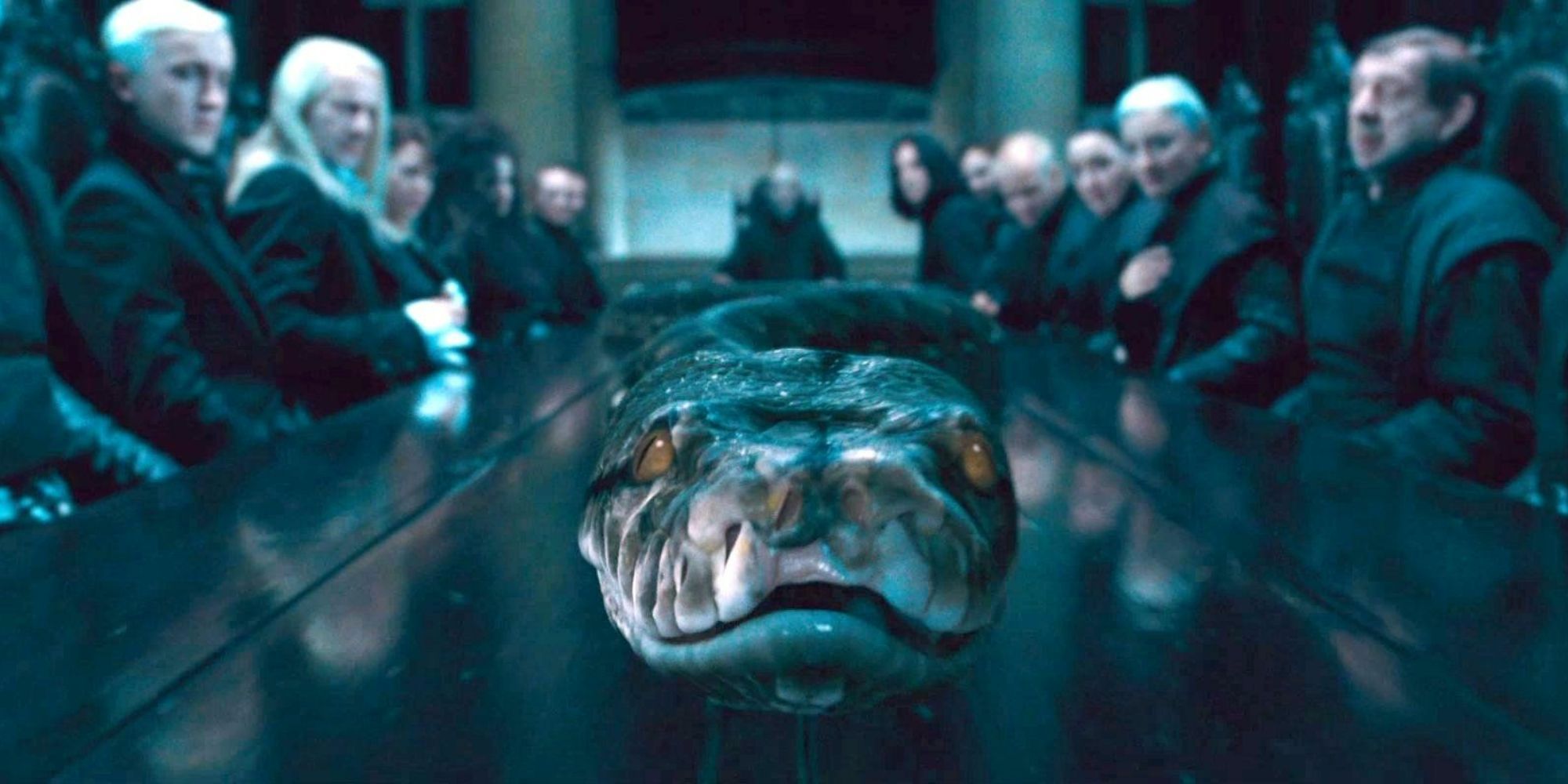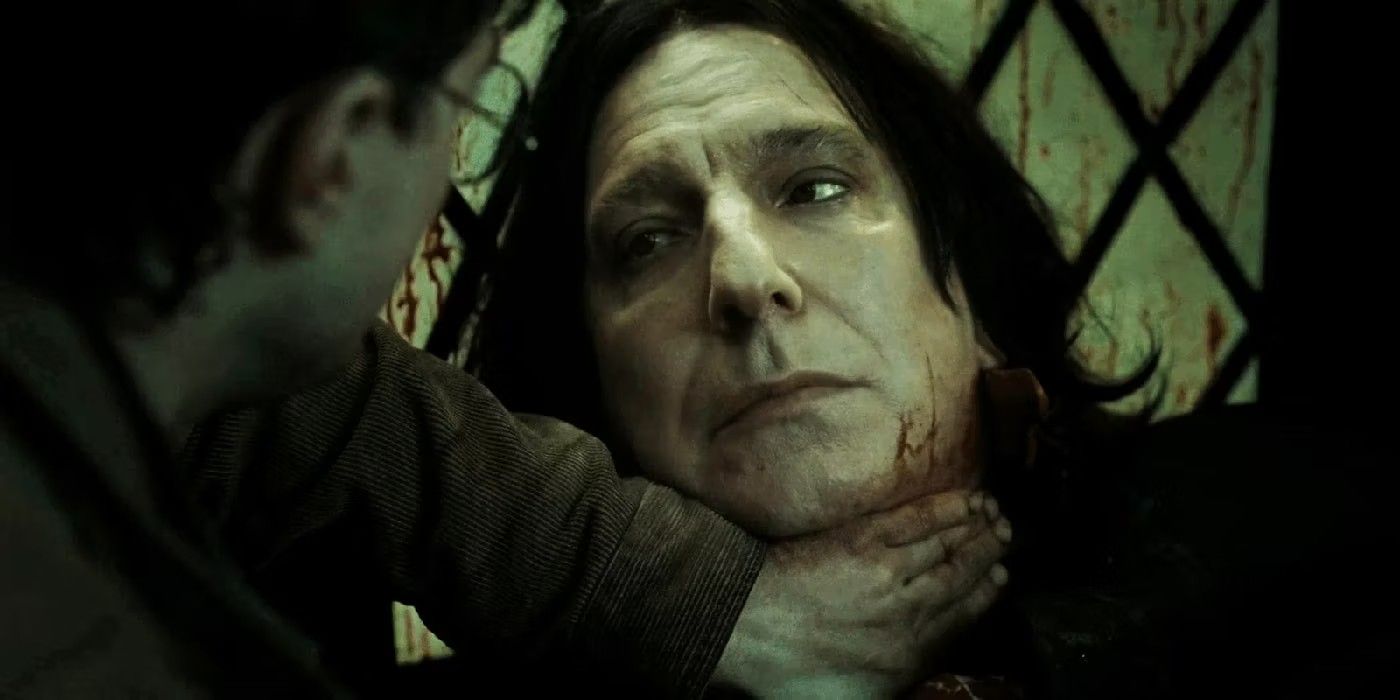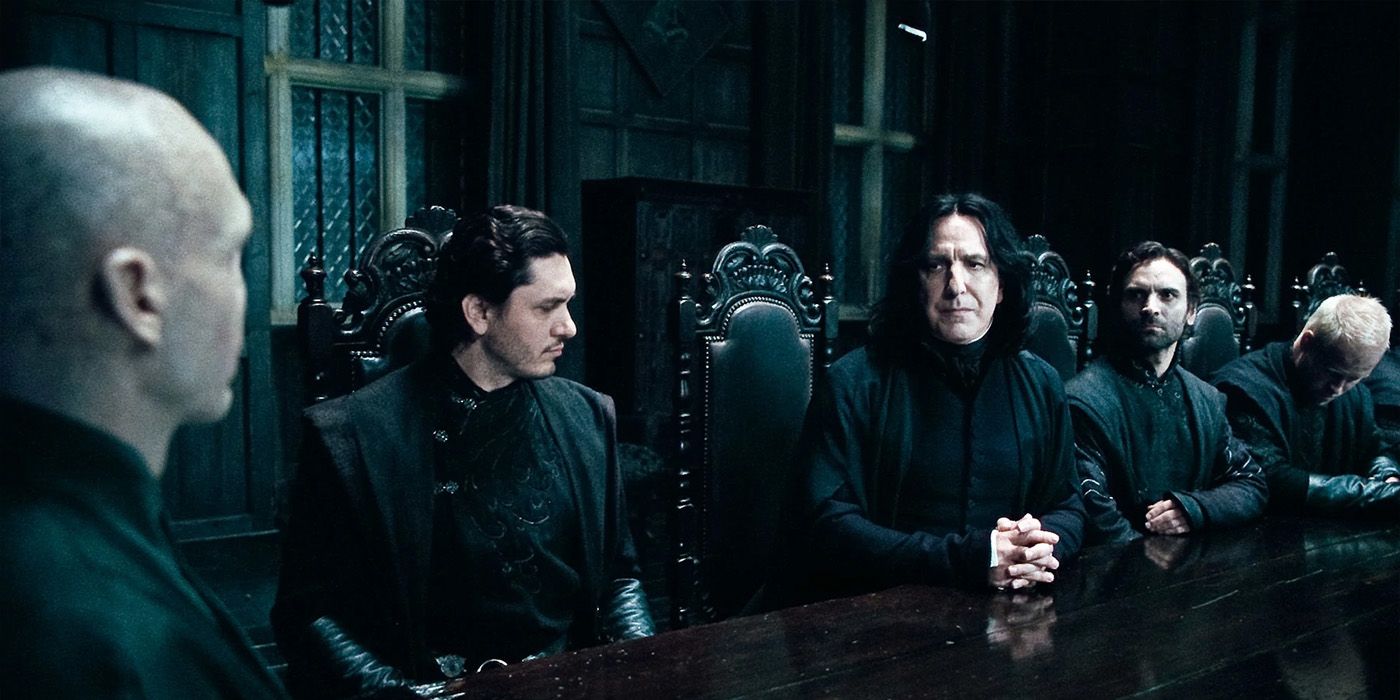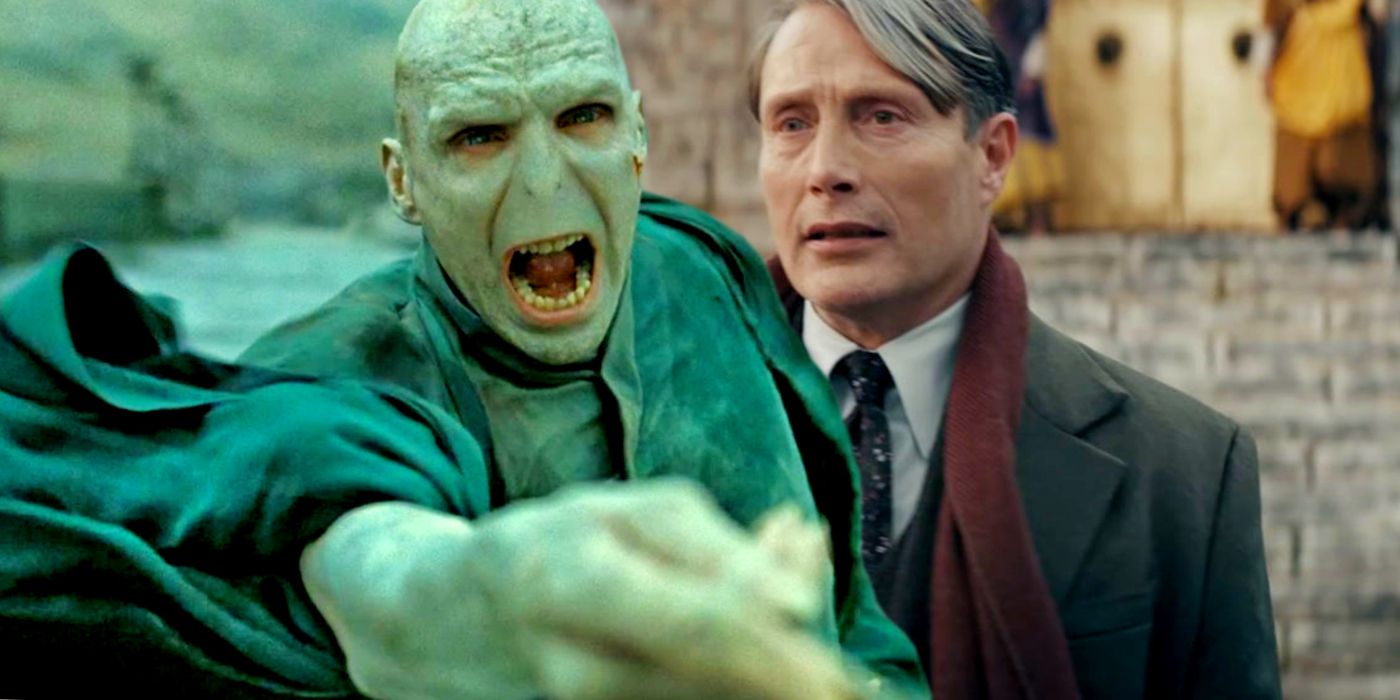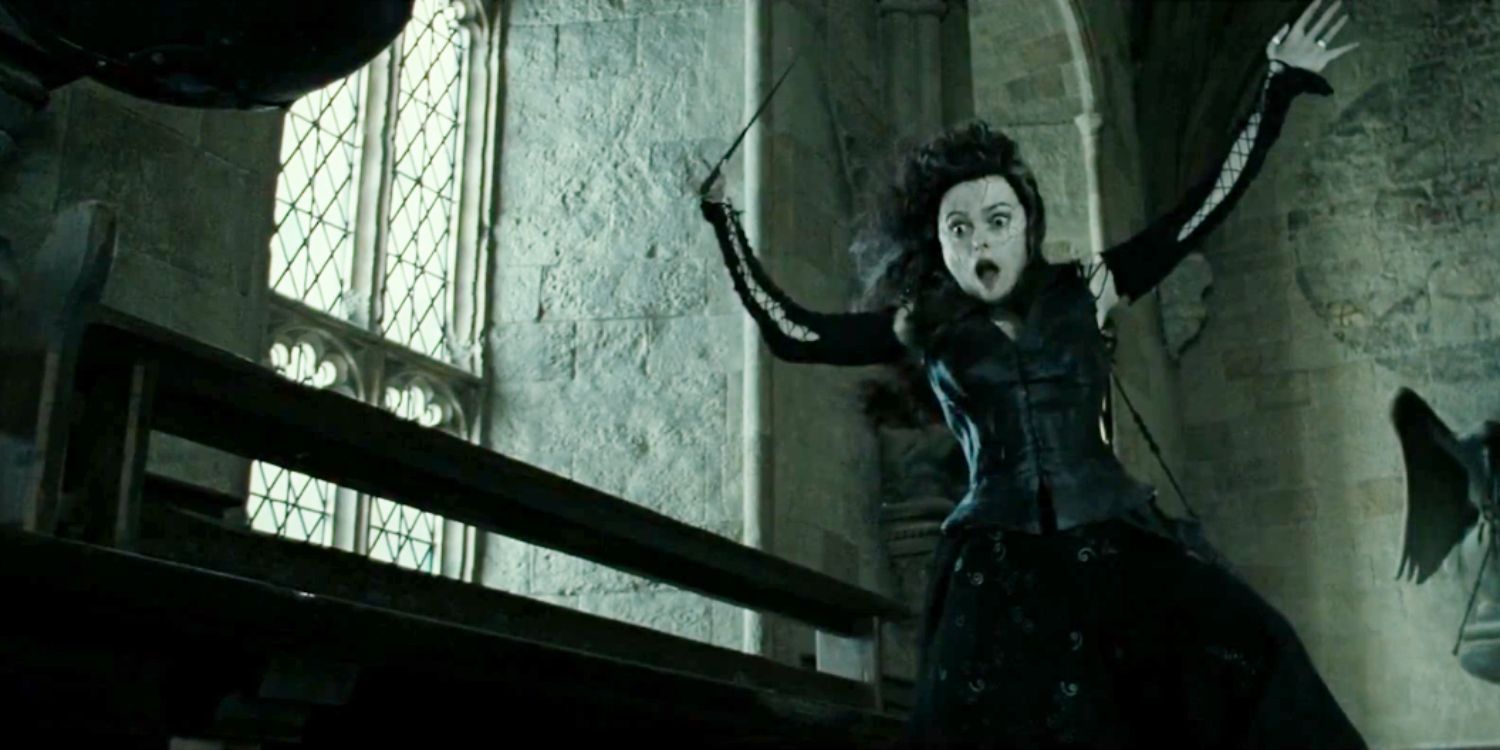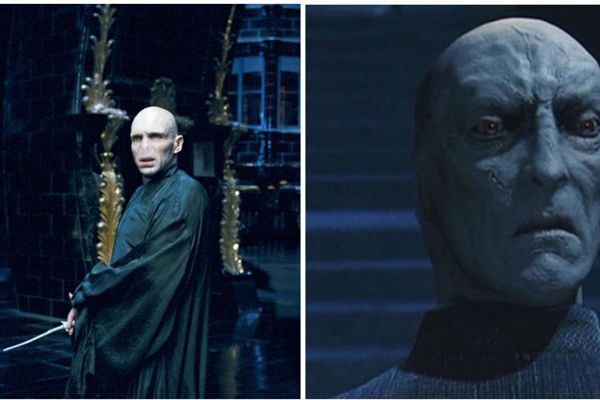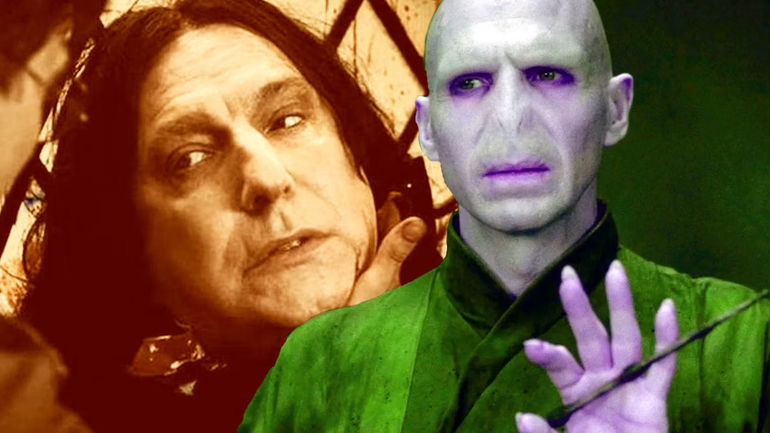
Voldemort killed Snape in Harry Potter And The Deathly Hallows Part 2 using his Horcrux snake Nagini. Many fans questioned why Voldemort chose to kill Snape and why he did it in that specific way. Throughout the Harry Potter movies, Voldemort used the Killing Curse on various characters, such as Alastor Moody, Lily, and James Potter. However, he didn't always resort to using Avada Kedavra. Snape's death was a unique case as Voldemort chose not to use the Unforgivable Curse, raising questions about his motives.
Severus Snape was one of the most misunderstood characters in the series. Initially portrayed as an antagonist and villain, Snape's true loyalties were revealed when he sacrificed himself for Harry. Snape had a troubled past, having been bullied during his youth. The only person he truly cared for was Lily Evans, who eventually drifted apart from him as she grew closer to James Potter and his friends. Snape eventually became a spy for Dumbledore, infiltrating the Death Eaters' ranks, which ultimately led to his tragic demise at the hands of Voldemort.
Why Voldemort Killed Snape Using Nagini
Nagini the Snake Before Killing Charity Burbage in Front of the Death Eaters in Harry Potter and the Deathly Hallows: Part 1 - Why Voldemort Killed Snape Using Nagini
Snape's loyalty seems to waver between Dumbledore and Voldemort in the Harry Potter movies. It is only in the final film that we learn Snape had always been on the side of good. He had sworn to protect Harry and carried out Dumbledore's orders in the fight against Voldemort, even going so far as to infiltrate the Death Eaters. One of Snape's most challenging tasks was to kill Dumbledore after Draco Malfoy failed to do so.
By using the Killing Curse on Dumbledore, who was already weakened from the effects of Marvolo Gaunt's ring, Snape aimed to earn Voldemort's trust. This act also led Voldemort to believe that the Elder Wand was now in Snape's possession. In The Deathly Hallows Part 2, Voldemort confronts Snape at the Boathouse and expresses frustration that the Elder Wand is not working correctly for him. He deduces that, because Snape was the one to kill Dumbledore, the Elder Wand rightfully belongs to him.
Voldemort realized that he couldn't use the Elder Wand to cast Avada Kedavra and kill its master.
He decided to kill Snape because he needed the wand's allegiance to change. Voldemort knew he couldn't cast Avada Kedavra with the Elder Wand to kill its master, so he instructed Nagini to be the one to end Snape's life. However, the Elder Wand's true master was Draco, who had disarmed Dumbledore in the Astronomy Tower. This meant that Snape's tragic death was in vain as Voldemort still believed he was a loyal Death Eater.
Voldemort Might Not Have Wanted Snape To Die
Snape looking at Harry in Harry Potter just before his death - Voldemort Might Not Have Wanted Snape To Die
Voldemort's trust in Snape sheds light on a new theory about Voldemort's killing strategy. Throughout his life, Snape skillfully played the role of a double agent, gaining Voldemort's trust as one of his most loyal followers. This trust may have led Voldemort to have a hidden desire for Snape to survive, as he ordered Nagini to be the one to attack him instead of using Avada Kedavra, the killing curse.
As a result, Snape manages to survive long enough to share a final, meaningful conversation with Harry. This interaction allows Snape to reveal his true loyalty to Lily and Dumbledore, providing closure for both Snape and Harry. This moment of understanding and reconciliation would not have been possible if Voldemort had chosen to use the killing curse on Snape.
Voldemort Never Figured Out Snape Was A Spy
Snape speaking to Voldemort at a meeting of Death Eaters - Voldemort Never Figured Out Snape Was A Spy
Voldemort had very few people he trusted, openly showing disdain even for loyal Death Eaters like Lucius Malfoy. However, there were a select few who earned his trust and respect, such as Bellatrix Lestrange and Severus Snape. Despite Snape's double agent role, Voldemort never suspected his true loyalty. Snape, who was skilled in Occlumency, could shield his mind from detection, possibly explaining why Dumbledore entrusted him with crucial tasks. Snape's actions, like stopping Quirrell and ensuring Voldemort's return, may have also contributed to Voldemort's misplaced trust. In the end, Voldemort's trust in Snape led to his downfall, as Snape was ultimately killed by the Dark Lord's orders.
Fantastic Beasts: The Secrets Of Dumbledore Has Retconned Avada Kedavra
Lord Voldemort in Harry Potter and Grindelwald in Fantastic Beasts 3. - Fantastic Beasts: The Secrets Of Dumbledore Has Retconned Avada Kedavra
In Fantastic Beasts: The Secrets of Dumbledore, the Avada Kedavra curse is used twice in a way that breaks two important rules. The curse is meant to instantly kill upon impact, but the first time it is used is when Grindelwald's followers attack Newt and the Qilin in the forest. They cast the curse on Qilin, which should have killed her instantly. However, it takes two separate uses of Avada Kedavra to kill her, and her death is not immediate.
Another instance occurs in Fantastic Beasts 3 when Grindelwald tries to attack Credence during the election. He wants to kill Credence for his disloyalty, but Albus and Aberforth's golden force field prevents it. This action breaks the blood pact between them, leading Grindelwald to escape. Dumbledore speculates that the blood pact was broken because Grindelwald used his spell for harm, while Dumbledore used his for protection. The Unforgivable Curse is known for being unblockable, making it a dangerous spell to use.
Fantastic Beasts doesn't provide an explanation for the changes made to the Avada Kedavra curse. It is likely that these changes were made to move the plot forward. It is also possible that Qilins possess a unique magic that makes them more difficult to kill, although this is never explicitly stated.
Voldemort's confusion regarding the allegiance of the Elder Wand ultimately leads to his defeat by Harry. When Harry disarms Draco of his regular wand during a confrontation, he unintentionally becomes the true owner of the Elder Wand.
The death of Snape in Harry Potter And The Deathly Hallows plays a crucial role in the final downfall of Voldemort.
Snape Isn't The Only Character To Die From Something Other Than Avada Kedavra
When Harry disarmed Draco, he unknowingly gained ownership of the Elder Wand. This transfer of allegiance became crucial during Harry's final showdown with Voldemort at Hogwarts. Due to the wand's loyalty to Harry, Voldemort's deadly spell Avada Kedavra rebounded and ultimately led to his own demise. Surprisingly, Snape's death in Harry Potter And The Deathly Hallows played a significant role in Voldemort's defeat. However, the impact of Snape and Voldemort's deaths was somewhat diminished in Fantastic Beasts, which changed the rules of how Avada Kedavra functions.
An image of Bellatrix being killed in Harry Potter and the Deathly Hallows - Part 2 - Snape Isn't The Only Character To Die From Something Other Than Avada Kedavra
In the Harry Potter franchise, the Killing Curse may appear to be used quite often, but it is actually reserved for the darkest wizards during intense battles. Not all wizards resort to using the Unforgivable Curses like Avada Kedavra. In addition to this curse, characters in the series meet their demise through a range of spells, curses, and various weapons available to them.
Dobby, a house elf, gains the ability to protect himself from basic wizard magic once he is freed from his bond with the Malfoy family. However, when he apparates with Harry and his friends, his magic is focused on the transportation, leading to him being impaled.
Similarly, Sirius Black does not die from the killing curse Avada Kedavra in the Harry Potter books. Instead, he is hit with Stupefy, a stunning spell, and falls through a veiled gateway to his death.
Another notable death in the Harry Potter series is that of Bellatrix Lestrange. Despite using Unforgivable Curses on others, she meets her end not from one of these curses but from a duel with Molly Weasley at the Battle of Hogwarts. Molly aims a mysterious curse at Bellatrix, hitting her directly in the heart and causing her demise.
The Harry Potter series is known for its heartbreaking moments, especially when it comes to wizards losing their lives in battles. Not all of these deaths happen in the same manner, and some are unexpected. This is why it may come as a surprise that Voldemort chooses not to use the Avada Kedavra curse on Severus Snape.
Editor's P/S:
The article delves into the enigmatic death of Severus Snape in the Harry Potter series, exploring the complex motivations behind Voldemort's choice to kill him using Nagini rather than the Killing Curse. It offers a nuanced analysis of Snape's character, revealing the layers of loyalty, betrayal, and sacrifice that defined him. The article also examines the implications of Voldemort's trust in Snape and the role it played in his ultimate downfall.
Overall, the article presents a comprehensive and thought-provoking exploration of one of the most pivotal moments in the Harry Potter saga. It invites readers to reconsider the complexities of the characters involved and the impact of their actions on the larger narrative. The inclusion of references to the Fantastic Beasts series adds an interesting dimension to the discussion, highlighting the evolving nature of the Harry Potter universe and the ways in which its rules and lore continue to be expanded and reimagined.
